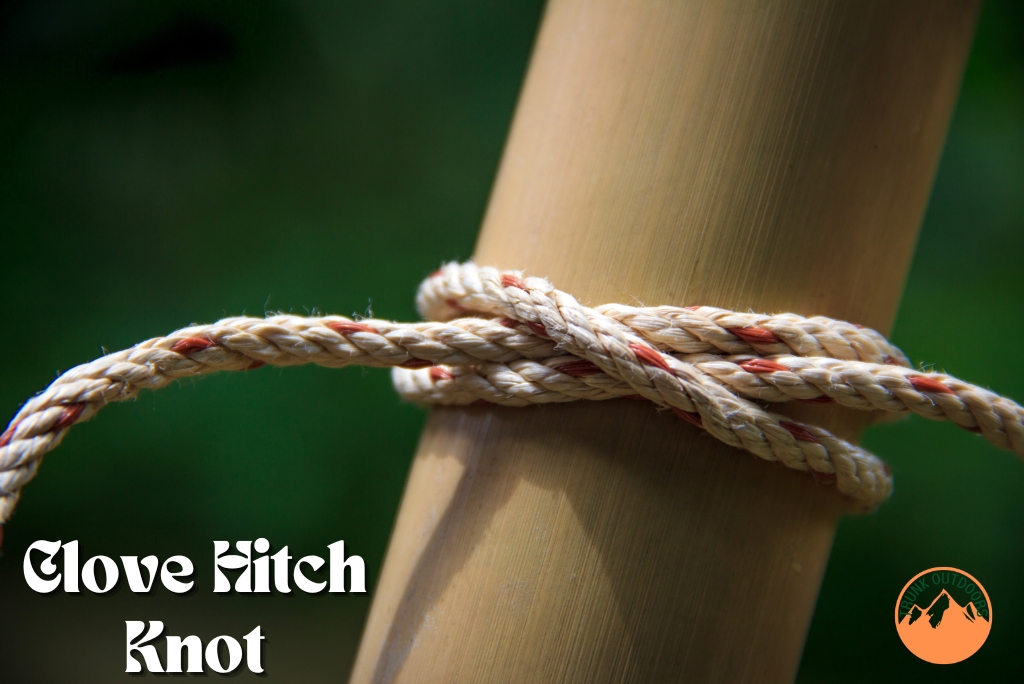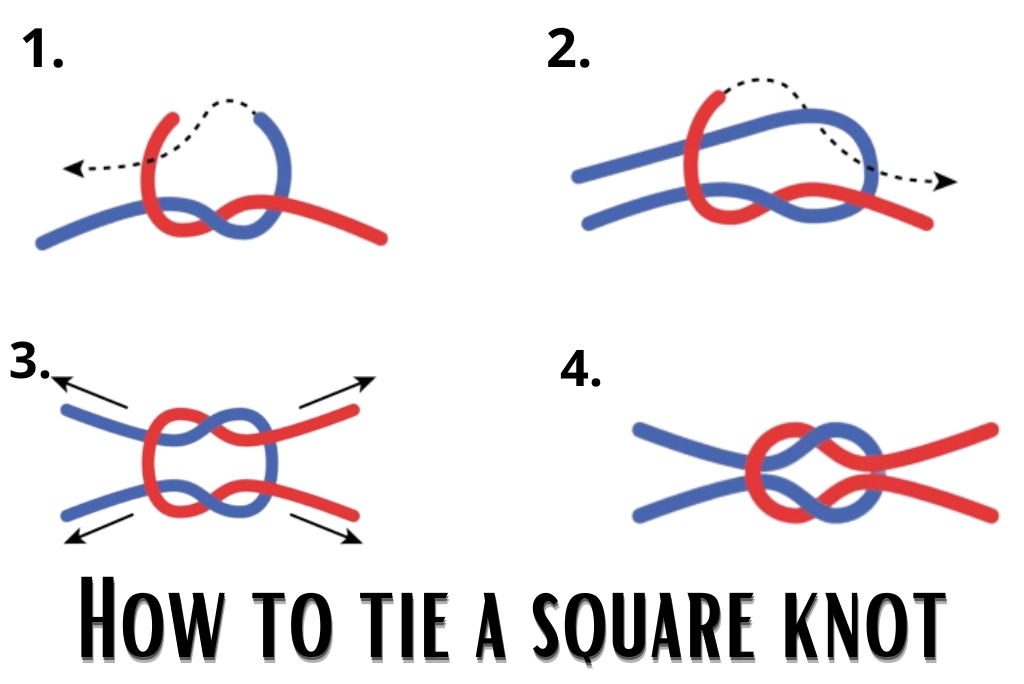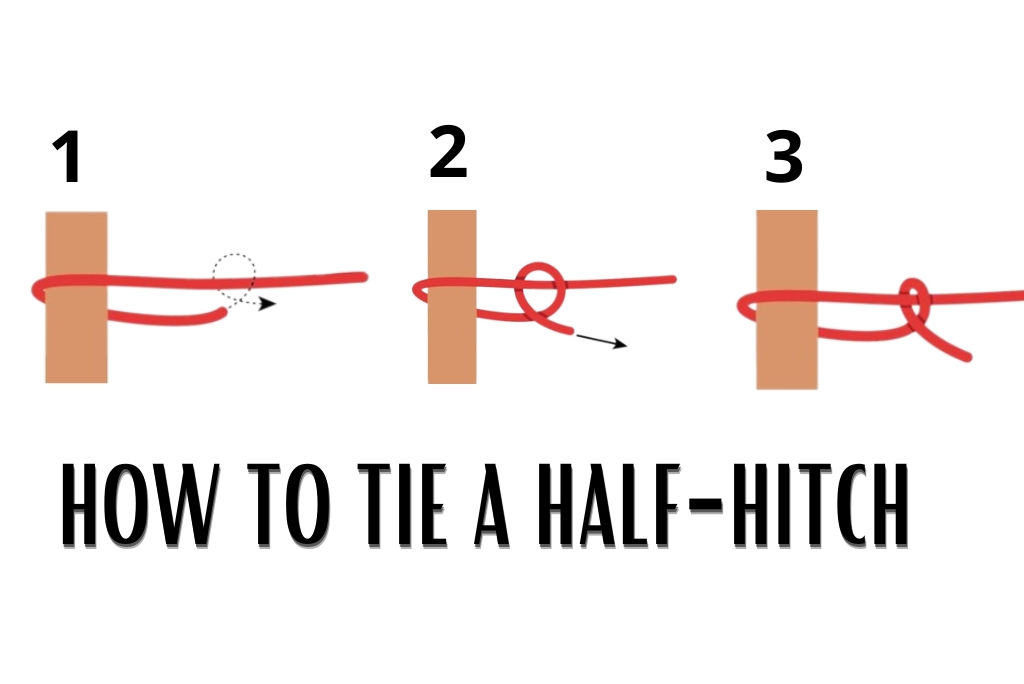15 Knots for Hammock Camping You Should Know
Hammock camping is a popular way to enjoy the great outdoors. Hammocks are portable, lightweight, and easy to set up, making them a perfect alternative to traditional camping tents. However, it’s essential to know how to tie a hammock knot to a tree to ensure it’s secure and stable.
There are several knots that are useful for hammock camping, and each has its purpose. In this article, we will provide you with detailed instructions on the best knots for hammock camping. By the end of this guide, you will be able to confidently and securely set up your hammock and enjoy a comfortable night’s sleep.
The Basics of Hammock Camping
Before we dive into the knots, let’s quickly review the basics of hammock camping.
A hammock is a piece of fabric that is suspended between two trees or other sturdy objects. When properly set up, a hammock can provide a comfortable and elevated sleeping experience away from damp and uneven ground.
They are also lightweight and easy to pack, making them a great choice for backpackers.
To set up your hammock, you will need a few essential pieces of gear, including a hammock (of course!), a suspension system, and carabiners.
The suspension system is what attaches your hammock to trees or other objects and can include straps, ropes, or other materials. Carabiners are used to secure the suspension system to the hammock. Check our article to learn about Hammock Camping Must-Haves.
Now that we have covered the basics, let’s move on to the knots you will need to know to set up your hammock properly.
Knots for Hammock Camping
1# The Marlin Spike Hitch
The Marlin Spike Hitch is a versatile knot that is commonly used to tie a hammock to a tree. This knot is easy to tie and adjust, making it a popular choice for hammock campers.
To tie the Marlin Spike Hitch,
- Start by wrapping your suspension system around the tree.
- Then, tie a simple overhand knot at the end of the suspension system.
- Next, take the working end of the suspension system and pass it through the overhand knot, creating a loop.
- Finally, pass the working end of the suspension system through the loop and pull it tight.
2# The Figure-eight Knot
The figure-eight knot is a sturdy knot that’s perfect for securing your hammock to an anchor point. It’s easy to tie and untie, making it a versatile knot for many camping situations.
- Start by creating a loop with the rope, then bring the end of the rope up and around the loop.
- Bring the end of the rope back down through the loop, creating a figure-eight shape.
- Tighten the knot by pulling the ends of the rope.
3# The Taut-line Hitch
The taut-line hitch is an adjustable knot allows you to tighten or loosen your hammock quickly.
This knot is used to adjust the tension of suspension system, like fine-tune the height and angle of hammock. To tie the taut-line hitch,
- Start by wrapping your suspension system around the tree.
- Then, tie a loop in the end of the suspension system using a Figure 8 knot.
- Pass the working end of the suspension system through the loop, and then wrap it around the standing part of the suspension system.
- Pass the working end back through the loop and pull it tight to secure the knot.
4# Bowline Knot Hammock
The Bowline Knot is a secure and reliable knot that is commonly used in a variety of outdoor activities, including hammock camping.
This knot creates a loop that will not slip or come undone, making it a great choice for tying your suspension system to your hammock.
To tie the Bowline Knot,
- Start by forming a small loop at the end of your suspension system.
- Then, pass the working end of the suspension system through the loop and around the standing part of the suspension system.
- Finally, pass the working end back through the loop and pull it tight.
5# Lark’s Head Knot
The Lark’s Head Knot is a simple knot that is commonly used in macrame and other forms of cord and rope work.
It is made by folding a length of cord or rope in half and then placing the fold over a ring, bar, or other object. Then, pull the cord ends through the loop formed by the fold and tighten the knot.
The Lark’s Head knot can also be used to attach cords and ropes to other cords and ropes or to create loops that can be used for hanging or other purposes.
It is known by several other names, including the Cow Hitch or Lark’s Foot. The knot is fairly easy to tie and untie, and it is also relatively secure.
6# Clove Hitch

The clove hitch is an ancient type of knot that is made by tying two successive single hitches around an object.
It is most effectively used to secure a rope to a cylindrical object, such as a pole or post. The knot is relatively easy to tie and untie, and it can be used to attach a rope to an anchor, create a loop in a rope, or join two ropes together.
The clove hitch can be used in a variety of settings, including camping, sailing, and rock climbing. It is also known by several other names, including the Builder’s Knot and the Ratline Hitch.
7# Square Knot
The square knot is a simple binding knot often used for tying hammocks to secure a rope or line around an object. However, it should not be used to join two ropes together, as it can slip and become hazardous.
It consists of two simple overhand knots tied in reverse of each other. To tie this knot:

- Start by holding one end of the rope in your left hand and the other end in your right hand.
- Cross the left end over the right end, then bring the left end under and over the right end to form the first half of the knot.
- Cross the right end over the left end, and bring the right end under and over the left end to complete the knot.
8# Trucker’s Hitch
The trucker’s hitch is a type of knot commonly used for tying hammocks or tarps when camping or backpacking.
It’s also known as the power cinch knot or the lorry knot, and it’s a combination of a slipped half-hitch, a fixed loop, and a slippery hitch.
To tie this knot,
- Start by creating a loop in the rope or cord using a slipped half-hitch, then pass the free end through the loop to create a fixed loop.
- The fixed loop can then be used to attach the rope to an anchor point.
- To tension the rope, create a slippery hitch by tying a simple knot around the standing part of the rope, then pass the free end through the loop created by the knot and pull tight.
The trucker’s hitch is popular among campers and backpackers because it allows for a high level of tension and can be easily adjusted.
This is particularly useful when setting up a hammock, as it allows you to achieve a comfortable and level sleeping position.
It’s important to note that the trucker’s hitch can be dangerous if not properly tied or if the rope is overloaded.
When tying the knot, be sure to carefully follow the instructions and double-check your work before putting any weight on the rope.
It’s also important to test the tension carefully and periodically check the knot while in use to ensure it remains secure.
9# Rolling Hitch
The rolling hitch knot is a knot that can be used for hammock tying, among other applications, and is known for its security and ability to adjust to changing tension.
To tie the knot, start by passing the rope around a mainline and then bring the working end up to loop around the mainline again.
The working end is then passed over and under itself before being pulled tight. This creates a friction knot that can grip the mainline and be adjusted up or down to change the tension.
This knot is especially useful for hammock tying as it can accommodate the dynamic tension changes caused by movement in the hammock.
However, as with any knot, it’s essential to double-check your work and periodically check the knot while in use to ensure it remains secure.
10# Prusik
The Prusik Knot is a popular knot used for hammock ties that attaches a small cord to a larger one. It works by wrapping the small cord around the larger one to create a tight grip, which can be adjusted to the desired tension.
The knot can be tied in a variety of ways, with different numbers of wraps around the larger cord and varying lengths of the small cord.
The Prusik Knot is a versatile knot that can be used for various applications, including rescue operations, climbing, and hammock setups.
Safety considerations must be taken into account when using the Prusik Knot.
- It is essential to ensure that the knot is tied correctly to prevent slippage, which could result in accidents or injuries.
- It is also important to regularly check the knot during use to ensure that it is still secure and has not loosened over time.
11# Becket hitch
The Becket Hitch Knot is a useful knot for hammock that creates an adjustable loop at the end of a rope.
The knot consists of a loop created by a bight in the standing end of the rope, which is then placed over a post or pole.
A second rope is then used to tie a half hitch around the standing part of the rope and the loop created by the bight.
It is a versatile knot that can be used in many different applications, including the construction of rope bridges, winching and hoisting, and hammock setups.
Like any knot, it is important to take safety considerations into account when using the Becket Hitch Knot.
- It is important to ensure that the knot is tied correctly to prevent slippage, which could result in accidents or injuries.
- It is also important to regularly check the knot during use to ensure that it is still secure and has not loosened over time.
12# Half Hitch
The half-hitch, also known as the basic knot, is the most basic and easiest knot to tie. It’s perfect for securing your hammock to a tree or post.
- Start by wrapping the rope around the tree.
- Bring the end of the rope back over itself, creating a loop.
- Bring the end of the rope through the loop and tighten.
- Repeat this step with the other end of the rope, and your hammock will be securely tied to the tree.

One must be careful, however, not to tie these knots too tightly, or they may become difficult to untie. It is also important to ensure that the knots are tied correctly to prevent slippage, which could result in accidents or injuries.
Additionally, it is important to check the knots regularly during use to ensure that they remain secure and have not loosened over time.
13# Slipped buntline hitch
The Slipped Buntline Hitch is a knot used for hammock camping that is similar to the Buntline Hitch but with an additional loop that makes it adjustable.
It is formed by passing the end of a rope around a supporting object and then tying a buntline hitch by passing the rope around itself and then tucking it under the previous turn. The additional loop creates an adjustable knot that can be easily loosened or tightened as needed.
The slipped buntline hitch is commonly used for hammock setups as it provides a secure and adjustable connection to the anchors.
It is important when using this knot to ensure that the knot is tied correctly to prevent slippage, which could result in accidents or injury.
Also, check the knot regularly during use to ensure that it remains secure and has not loosened over time.
14# Butterfly knot
The butterfly knot, also known as the lineman’s knot, is a versatile and strong knot that is frequently used for attaching hammocks to trees or other anchor points.
It features a loop that can be easily adjusted to achieve the desired tension or length, making it an ideal choice for situations where you need to set up a hammock quickly and safely.
The knot is relatively easy to tie and can be adjusted even after it has been loaded, which is a useful feature when setting up a hammock.
When using the butterfly knot, make sure that the knot is properly tied and frequently check that it is secure and not slipping.
It is also a good idea to have some backup knots or systems in place in case the butterfly knot fails or becomes compromised.
15# Sheet Bend
The sheet bend is another versatile knot that is commonly used to attach hammocks to anchor points. It is a simple knot to tie and features a double loop that provides a reliable and secure attachment point.
One of the key features of the sheet bend is that it can be used to join two different types of ropes or cords, which makes it a valuable knot to know in a range of outdoor situations.
When using the sheet bend, it is important to ensure that both the hammock and the anchor points are sturdy and capable of supporting the weight of the user.
It is also a good idea to check the knot frequently to ensure that it remains secure and has not become loose or untied.
Related: How to Get in and Out of a Hammock Safely
Conclusion
By mastering these essential knots for hammock camping, you will be able to confidently and securely set up your hammock, ensuring a comfortable and restful night’s sleep in the great outdoors.
Remember, when tying your hammock, always use the appropriate knots and materials for the job. Avoid using knots that you are not familiar with, as this can lead to an unsafe and unstable setup. Always check your suspension system and knots for signs of wear and tear before each use.